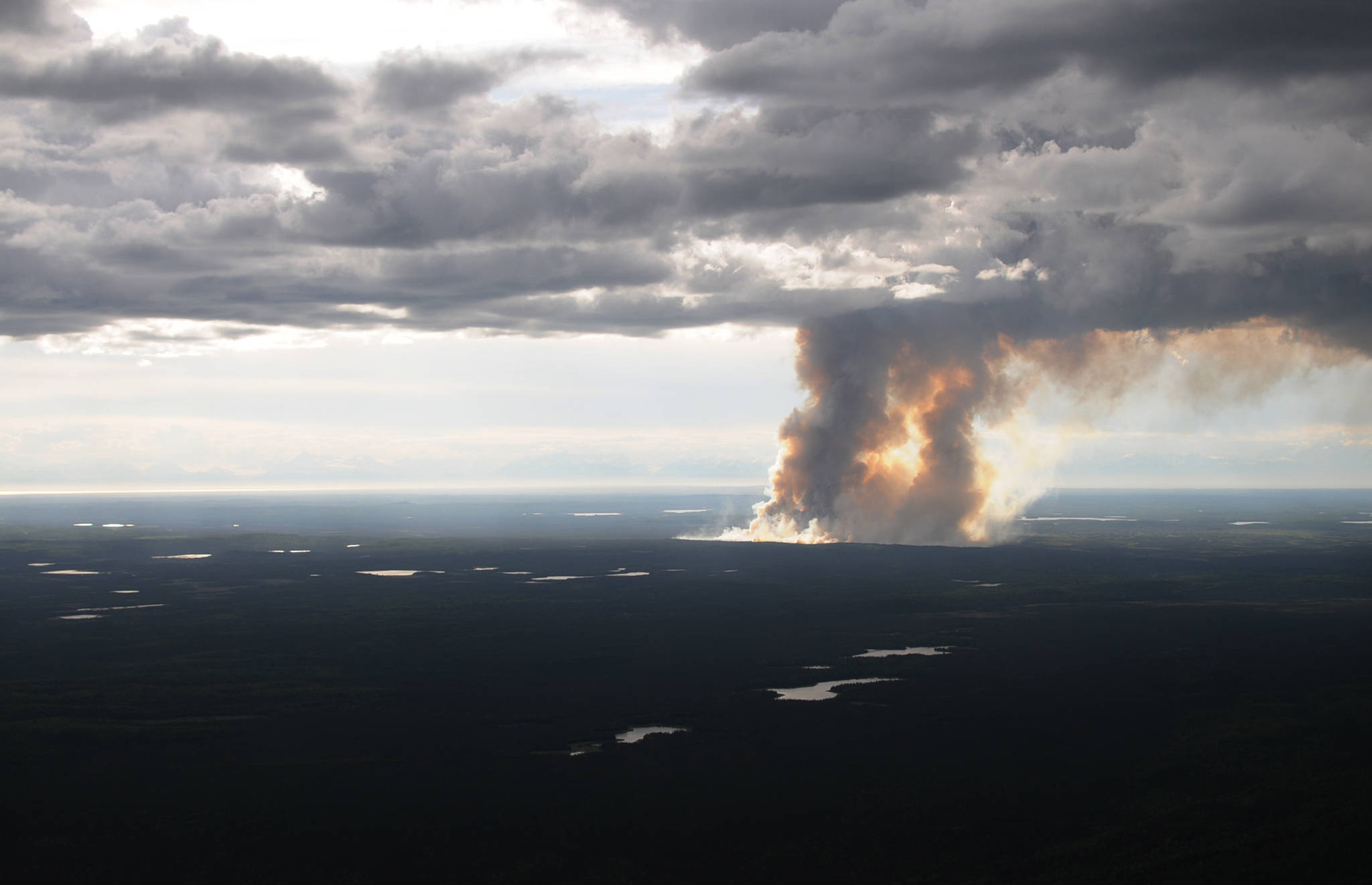With Alaska’s wildfire season half over and cool, wet conditions in the forecast, the Kenai Peninsula has yet to see a major blaze. There’s no guarantee that it’s out of the woods just yet, though.
“The fact that we’re getting close to what would be the peak and we have another week of wet cool weather forecast I think it would be fairly hard, but not impossible, to see significant fires,” Julia Ruthford, fire weather forecaster with the National Weather Service in Anchorage, said.
So far this year, the peninsula has avoided major fire outbreaks. The Alaska Department of Forestry had responded to 21 fires covering about 23 acres in the Kenai area as of Wednesday morning, according to the daily Alaska Interagency Coordination Center Situation Report. By comparison in 2015, during the second-busiest Alaska wildfire season on record, 14,086 acres of state forestry land had burned in the Kenai area by the end of the season. In 2017, when about half the average number of acres burned across Alaska, 21 fires burned 1,112 acres of state-protected lands on the peninsula.
In Kenai, spring 2018 has been slightly wetter than usual, but not drastically. The Kenai Municipal Airport recorded .96 inches of rain in May, slightly higher than the average .74 inches. In April, .95 inches of rain were recorded at the airport compared to an average of .60 inches, Ruthford said.
Temperatures have similarly cleaved fairly close to normal so far this spring. In April and May, the average recorded temperatures were 37.3 and 44.8 degrees Fahrenheit, respectively. Long-term average temperatures for April and May are 36.1 and 45.8 degrees.
Cooler, wetter weather is likely to persist in the next week or so, decreasing the likelihood of a fire outbreak.
“Right now in the short term looking like its going to stay pretty quiet,” Ruthford said.
Alaska’s fire season begins April 1 and runs until the end of August, but peak fire season typically happens from May to early July, when hotter temperatures, less precipitation and long days can fuel blazes, Hans Rinke, area forester with the Division of Forestry, said.
“Late in the summer, mid-July, we start to get a summer pattern that is typically a little cooler and a little wetter and obviously that moderates fire activity,” he said.
Past years with more active fire seasons have tended to be warmer and drier, with less snowfall, than this year, he said.
Across the state, the 2018 wildfire season has been relatively subdued. About 500 wildfires occur in a typical fire season, and burn about 1.2 million acres, Tim Mowry, information officer for the Alaska Division of Forestry, said.
As of June 20, 222 wildfires had been reported, burning 216,235 acres, according to Wednesday’s situation report.
A slow beginning to a fire season, however, doesn’t guarantee a quiet fire year. In 2004, when Alaska had its biggest fire season on record and 6.5 million acres of land burned, fire season didn’t really get started until mid-June. Only 182 fires had been reported and an estimated 22,630 acres had burned by June 13 — the midway point of the season, according to the Division of Forestry. In 2015, when 768 fires burned more than 5.1 million acres, only 241 fires had been reported and an estimated 59,757 acres had been burned by June 13. By comparison, 100,000 acres had burned by June 13 of this year.
Given current weather patterns, Mowry said he’s skeptical of a repeat of the 2004 or 2015 seasons, but he emphasized the need for safe fire practices no matter the forecast. Campers building fires should clear ground of grass and never leave a fire burning, for example. Those building fires more than 3 feet in diameter must get burn permits and follow all instructions on the permits.
“We don’t want people to get complacent and think there’s no way for fires to start,” Mowry said. “If there’s fuel there and there’s been wind, a fire can start.”
Reach Erin Thompson at ethompson@peninsulaclarion.com.

